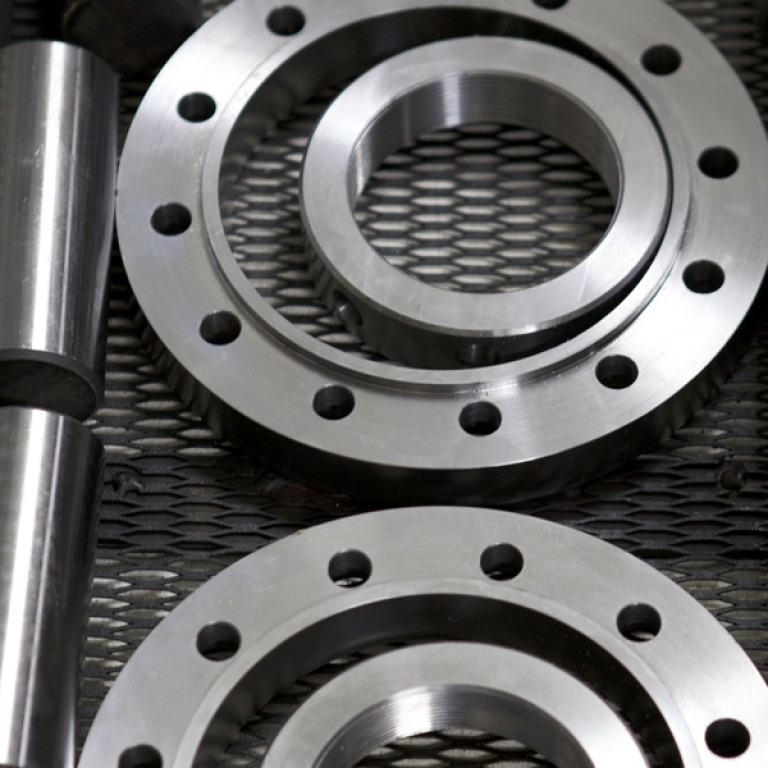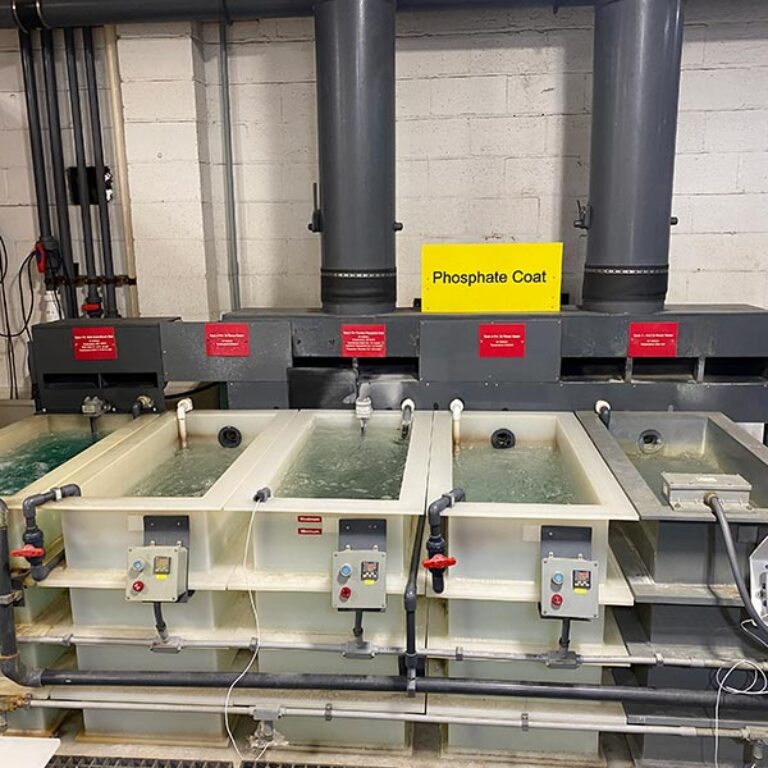Services
-
Type II Anodizing / Type III Hardcoat
This is a sulfuric acid process that forms a protective film of aluminum oxide on the surface of the metal. This coating produces a medium to hard protection, making the aluminum less susceptible to damage and corrosion while generating an electrically non-conductive exterior.
Sulfuric Anodize Type II / Type III provides:
Corrosion Resistance
Decorative/Cosmetic Appearance
Stain Resistance
Increased Durability / Lubricity
Non-Electrical Conductive Surface
Type II Class 1: Non-dyed
Type II Class 2: Dyed – Red, Blue, Yellow, Black, Olive, Brown, Green, Orange, Violet, and Custom Colors (please call for availability)
Specification: MIL-PRF-8625F (2)
Eaton Specification: ACES-1758P1
Sampling Plan: MIL-STD-105E
Processing Time: 48 hours
-
Blast/Micro Blast
This process prepares the surface for non-reflective matte finishes and paint adhesion. Blasting can also remove anodize for additional processing such as chromate conversion coating. Great Lakes Metal Finishing offers Aluminum Oxide 180 Grit Blast and Aluminum Oxide of various grit-blasts to accommodate any customer need. Other grit sizes and media may be available for an additional charge.
Processing Time: 48 hours
-
Chemical Conversion Coat
This process of coating provides excellent corrosion protection and acts as a base for painting. There are two classes of coatings, Class 1A and Class 3.
Mil-DTL-5541 (5S41?) Type I (hexavalent chrome) and Type II (tivalent). ROHS compliant for Type II.
Eaton Spec ACES 16P5 and 16P68
Class 1A Coatings provide corrosion protection and paint finish adhesion to unpainted 100% aluminum and aluminum alloy surfaces.
Class 3 Chemical Coatings provide a corrosion preventive film for electrical and electronic applications where low resistance contacts are required.
-
Passivation
Quality Passivation at competitive prices ran to AMS 2700 Type 2 and Type 7. The main purpose of this process is to remove free iron from the surface of stainless steel parts that will be deposited during the manufacturing process. This helps prevent rust and can make parts look better with no dimensional change. Passivating with nitric acid will remove the free iron and remove contaminant residue, allowing the stainless steel to set up its own corrosion barrier.
Specification: AMS 2700E Type 2 & Type 7
Eaton Specification: ACES-16P50 (Type 2); ACES-16P51 (Type 7)
Sampling Plan: AMS 2700E
Processing Time: 48 hours, but processing time for orders requiring humidity and water immersion testing shall be 72 hours.
-
Phosphate Coating – Titanium
GLMF offers phosphate coat that complies with AMS 2486. Call for competitive pricing.
Specification: AMS 2486E
Eaton Specification: ACES-16P21
Sampling Plan: AMS 2486E
Processing Time: 48 hours
-
Multi-Process
Many projects require more than one of the processes listed above. In such a case, Great Lakes Metal Finishing offers multi-process operations to meet your needs no matter how complex. GLMF offers various masking techniques, Two Tone, and Micro-blast.


